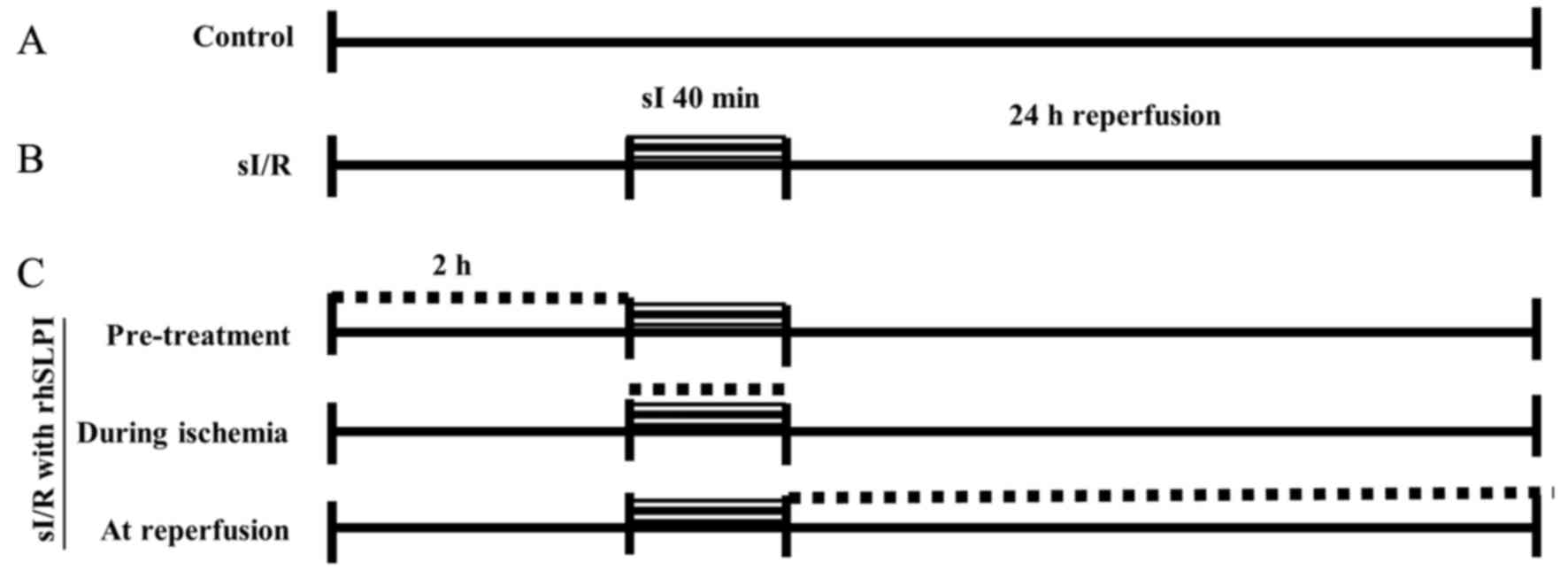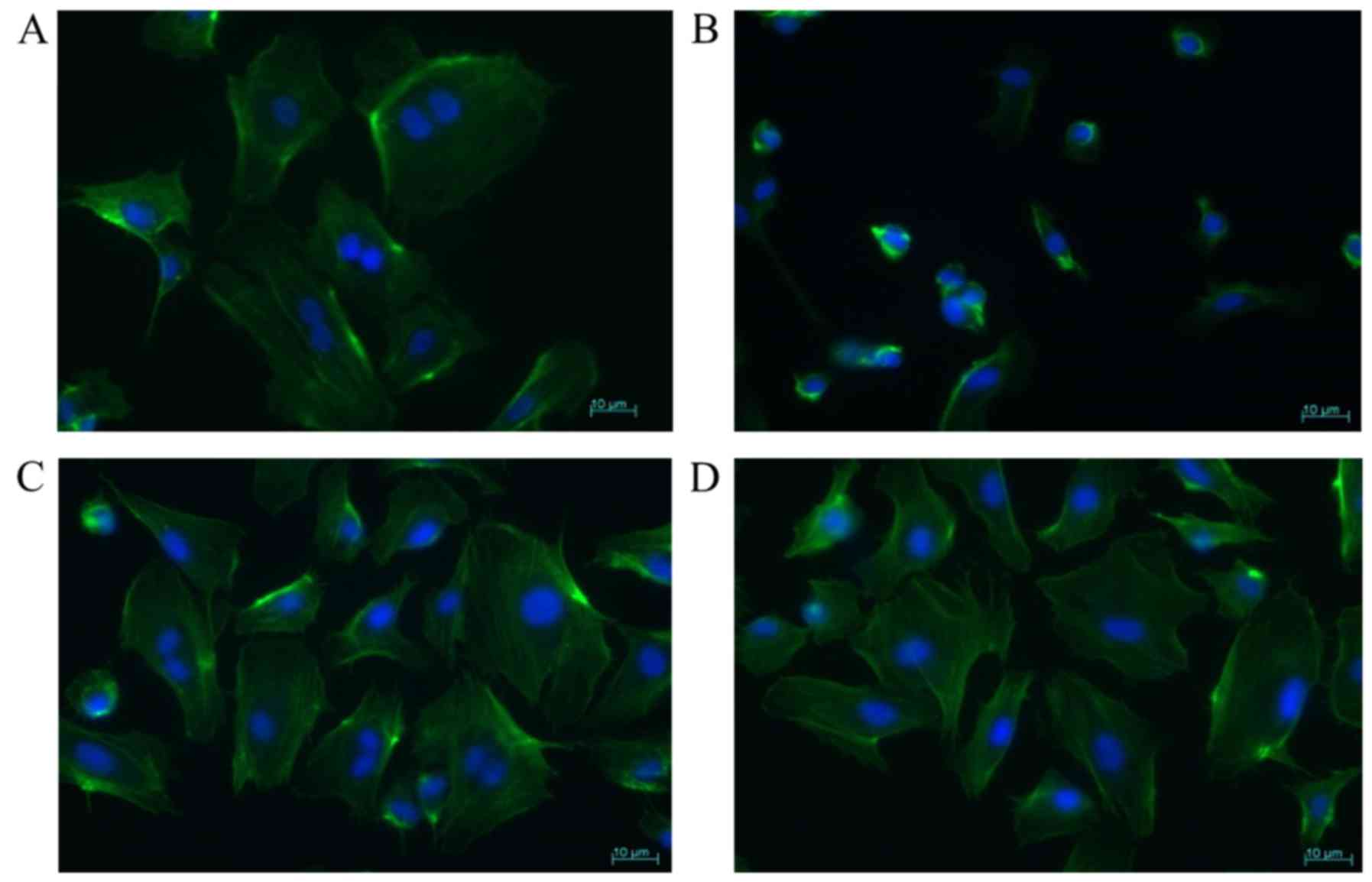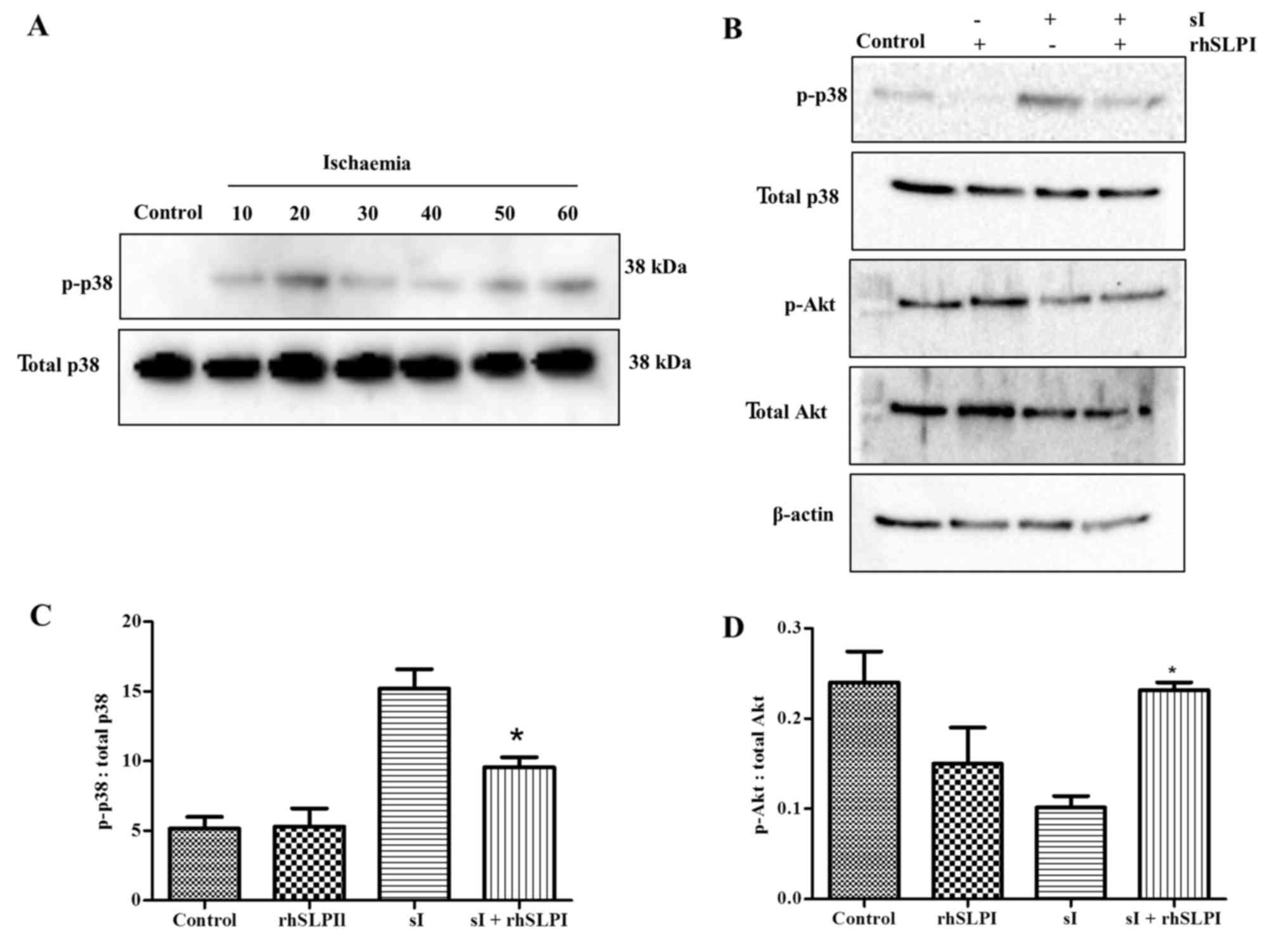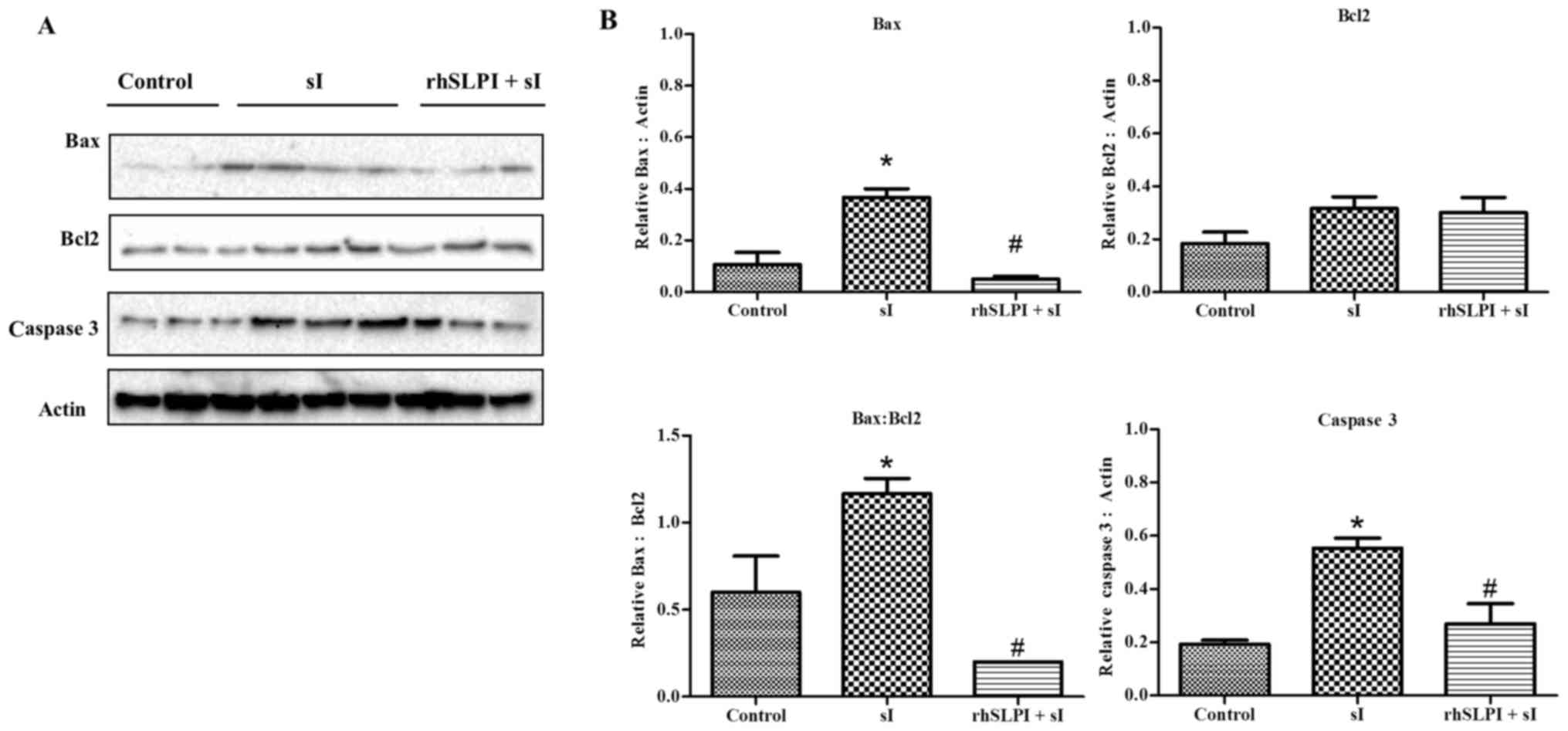An in vitro endothelial cell protective effect of secretory leukocyte protease inhibitor against simulated ischaemia/reperfusion injury
- Authors:
- Published online on: October 10, 2017 https://doi.org/10.3892/etm.2017.5272
- Pages: 5793-5800
-
Copyright: © Nernpermpisooth et al. This is an open access article distributed under the terms of Creative Commons Attribution License.
Metrics:
Total
Views: 0 (Spandidos Publications: | PMC Statistics:
)
Total PDF Downloads: 0 (Spandidos Publications: | PMC Statistics:
)
Abstract
Endothelial dysfunction is an essential deleterious modulator of ischaemia/reperfusion (I/R) injury. Secretory leukocyte protease inhibitor (SLPI) has demonstrated myocardial protection in cardiac transplantation; however, the effect of SLPI in endothelial I/R injury remains unexplored. In the present study, the effect of recombinant human SLPI (rhSLPI) treatment against endothelial cells (ECs) subjected to simulated I/R injury and the effect of treatment at different time points were determined. Human umbilical vein ECs (HUVECs) were subjected to normoxic or simulated I/R (sI/R) conditions, and rhSLPI at concentrations of 1, 10, 100 and 1,000 ng/ml was added to the cells prior to ischaemia, during ischaemia or at the onset of reperfusion. Endothelial injury and cytoskeleton disruption were assessed, and western blot analysis was conducted. The results revealed that rhSLPI treatment at 1,000 ng/ml significantly increased the HUVEC viability under sI/R injury (P<0.05). In addition, treatment with rhSLPI prior to or during ischaemia markedly attenuated the activity of lactase dehydrogenase compared with that in the sI/R group. In addition, the H2O2‑induced reactive oxygen species production was reduced by ~17% upon rhSLPI pretreatment. Endothelial cytoskeleton disruption was also preserved by rhSLPI added prior to the reperfusion period. Furthermore, pretreatment with rhSLPI promoted protein kinase B activation, as well as reduced p38 mitogen‑activated protein kinase phosphorylation and B‑cell lymphoma 2‑associated X protein expression in response to I/R injury. These findings indicated that rhSLPI possesses antioxidant and antiapoptotic properties against endothelial responses to I/R injury. Therefore, the cytoprotective effect of rhSLPI may provide a potential pharmaceutical target to limit endothelial‑mediated I/R injury.

















